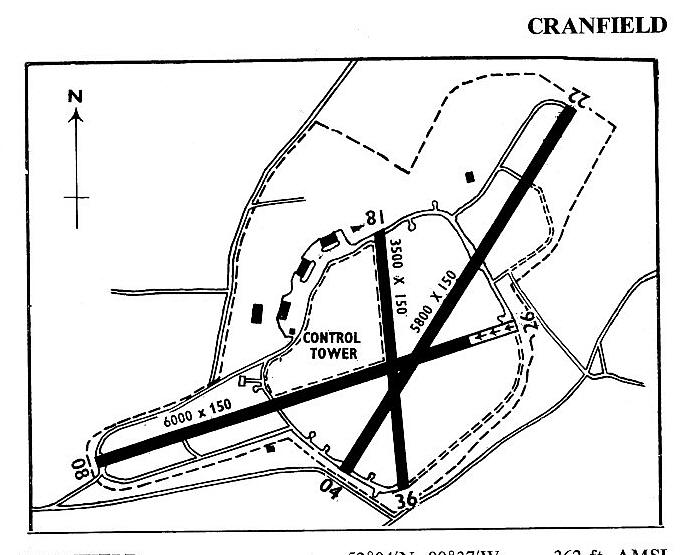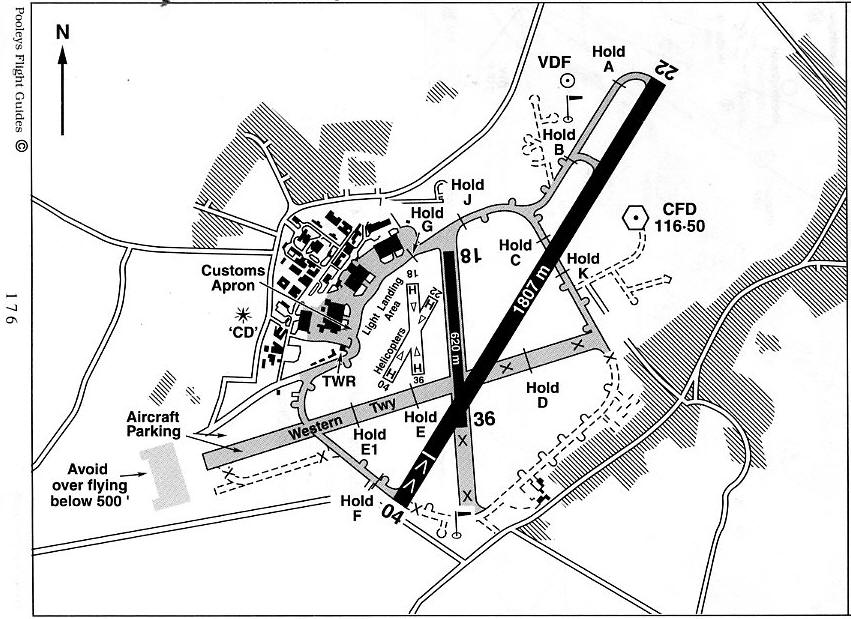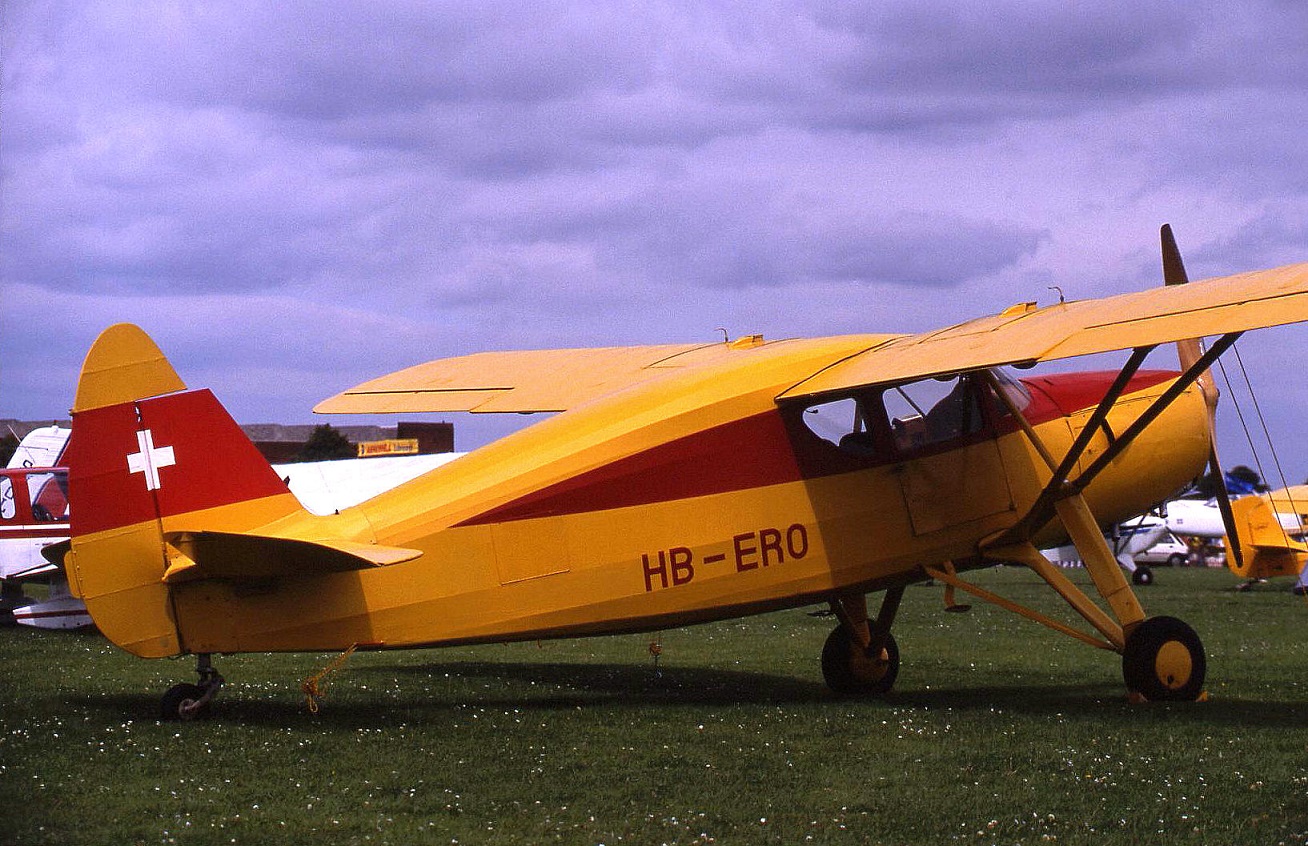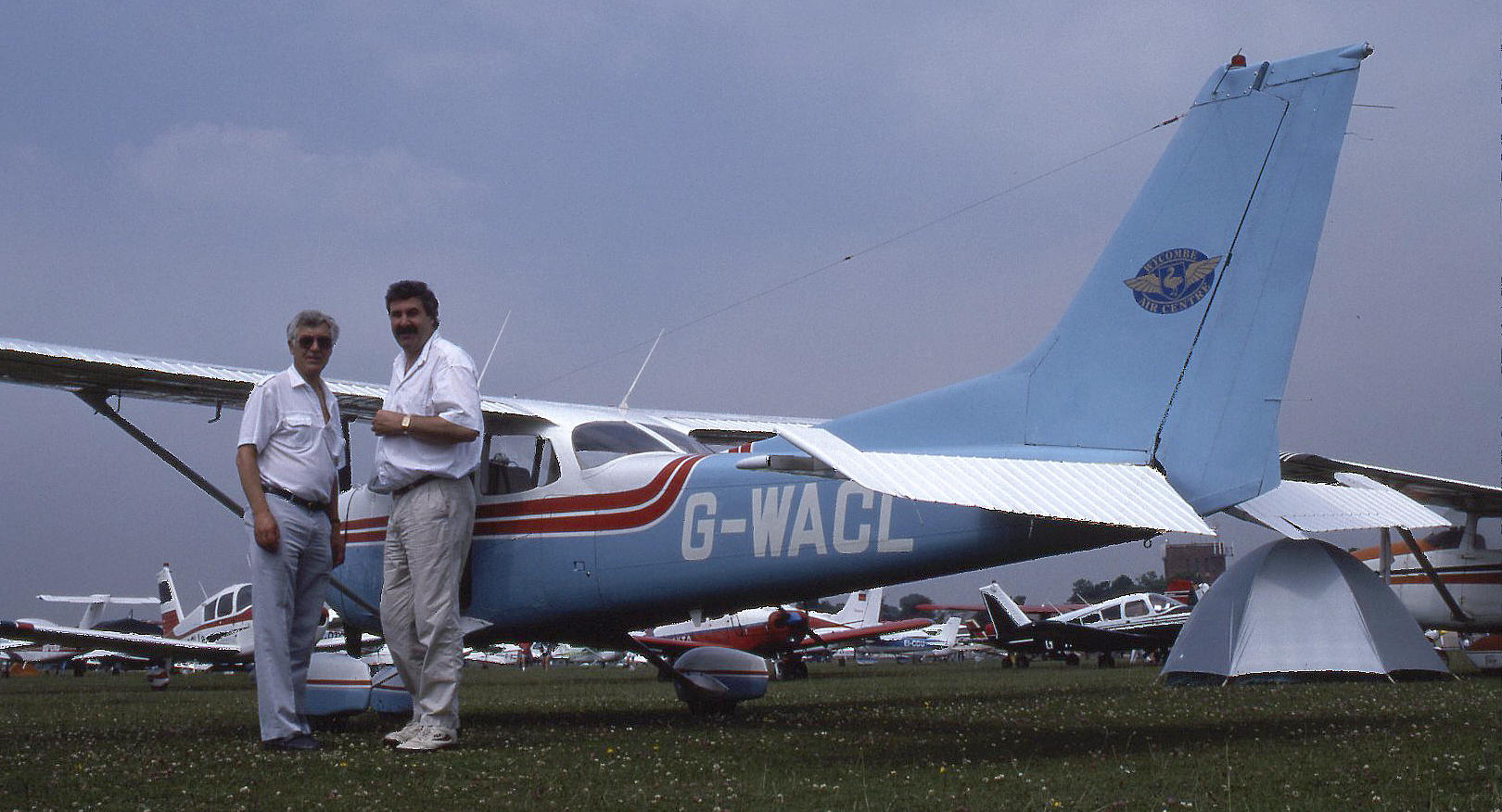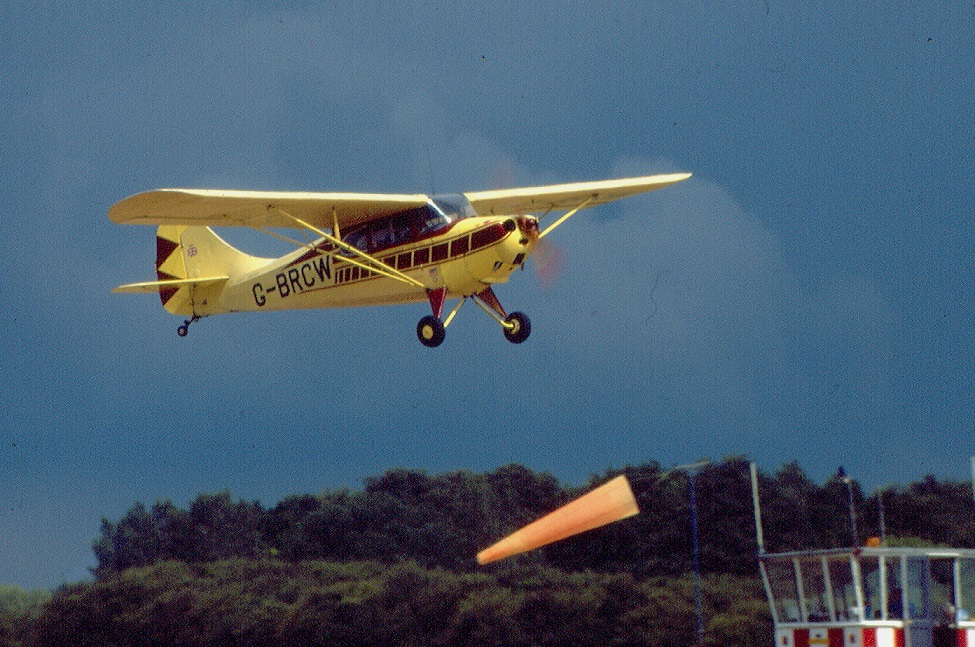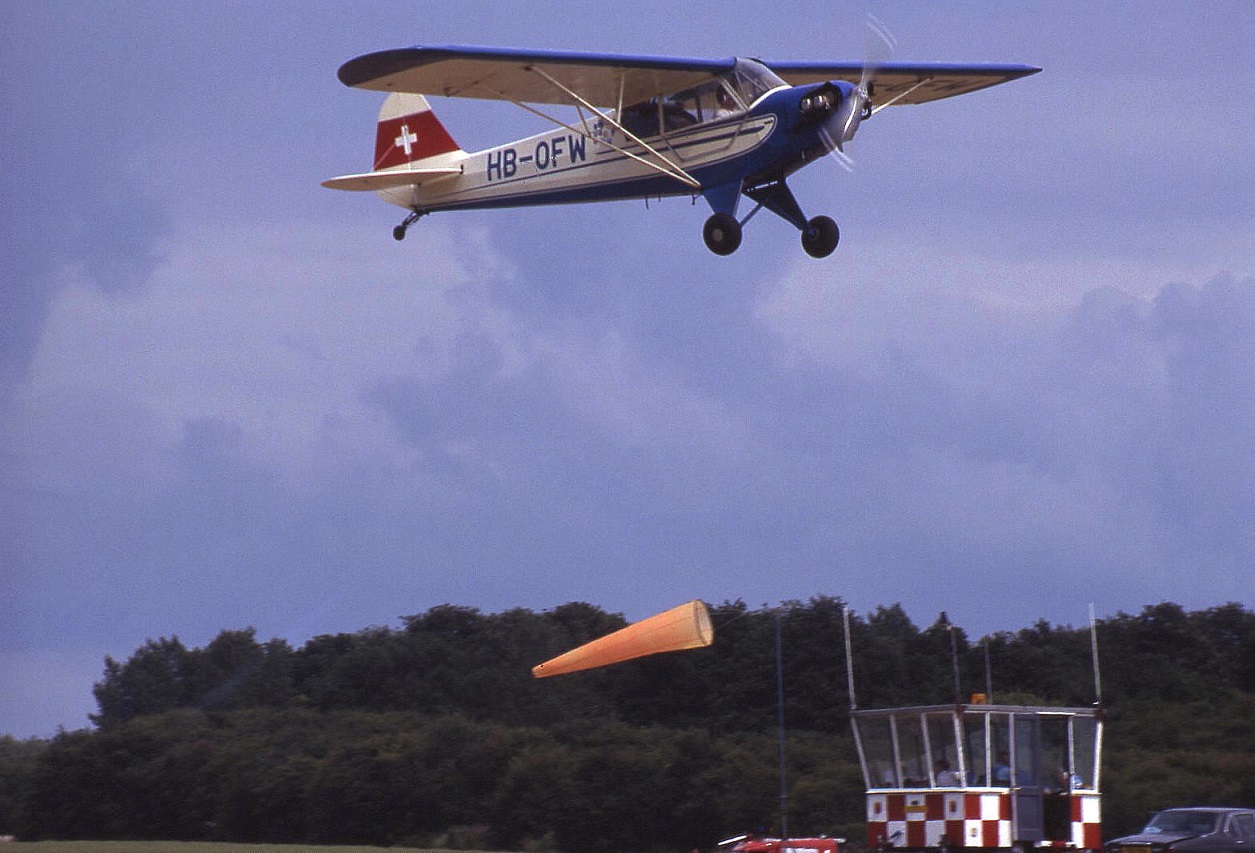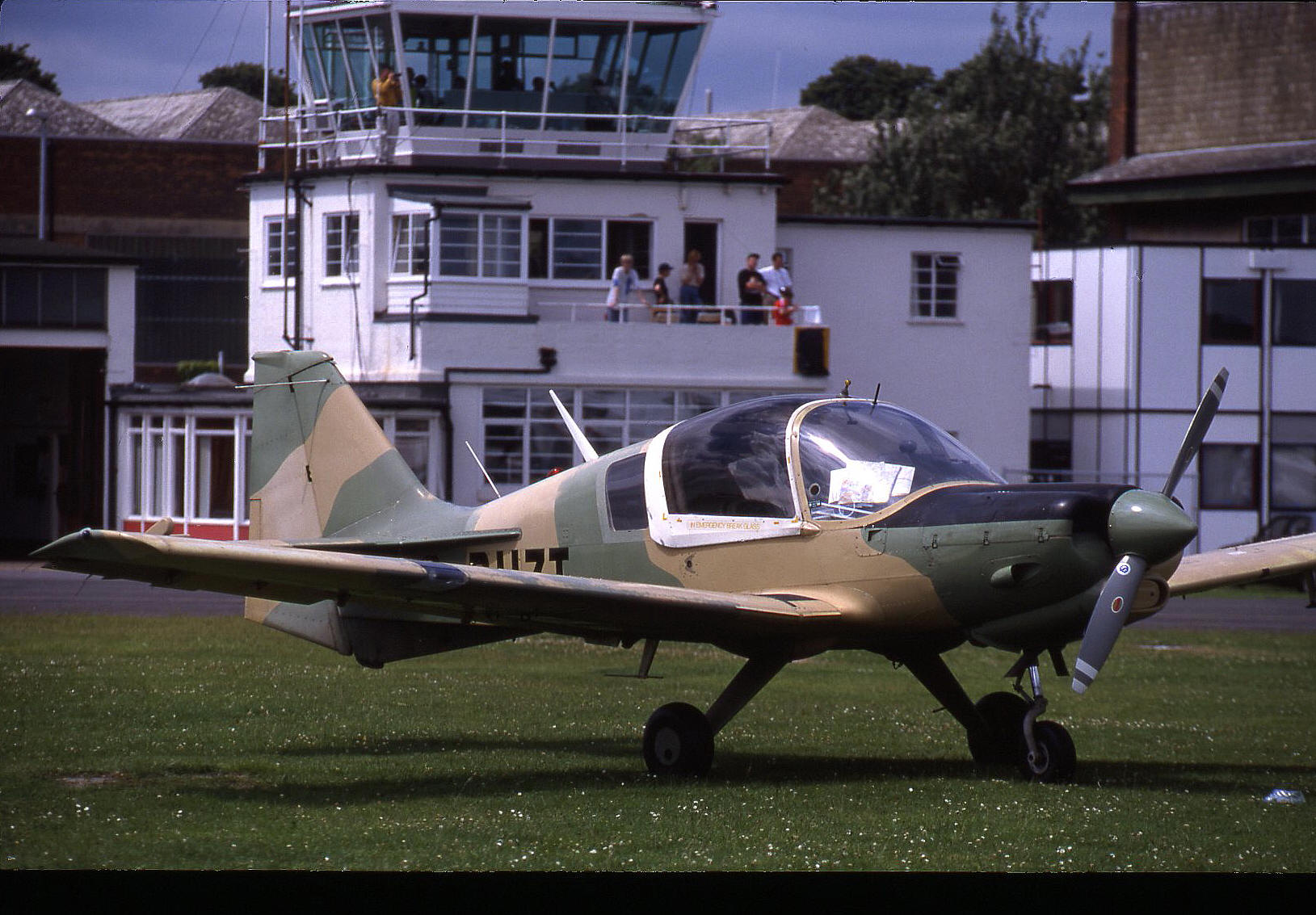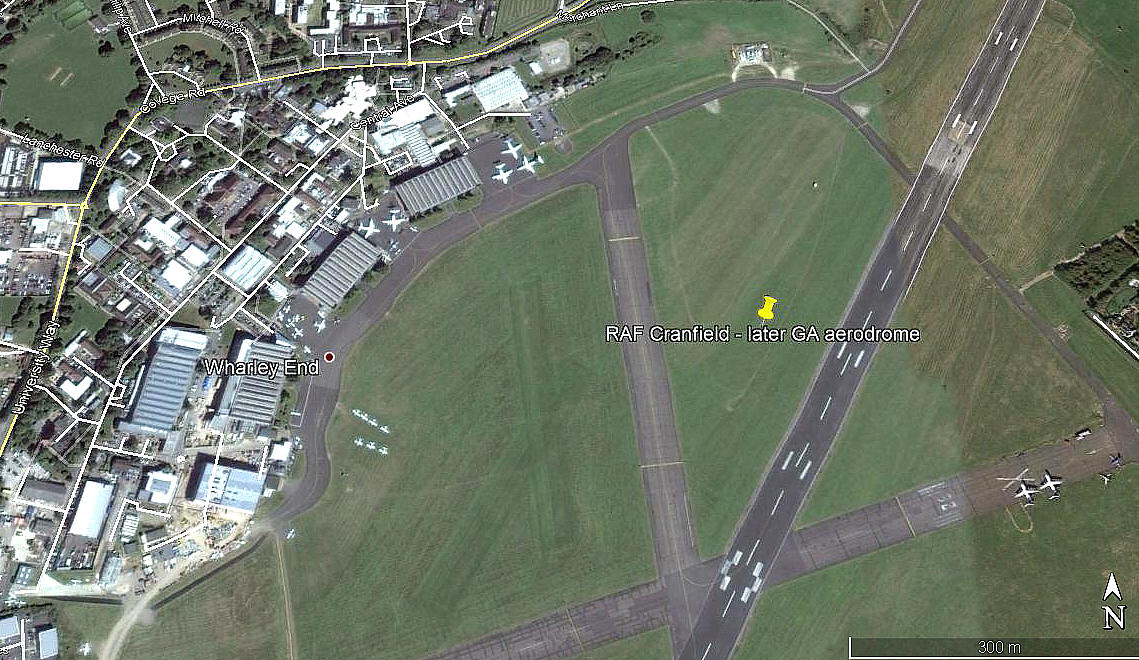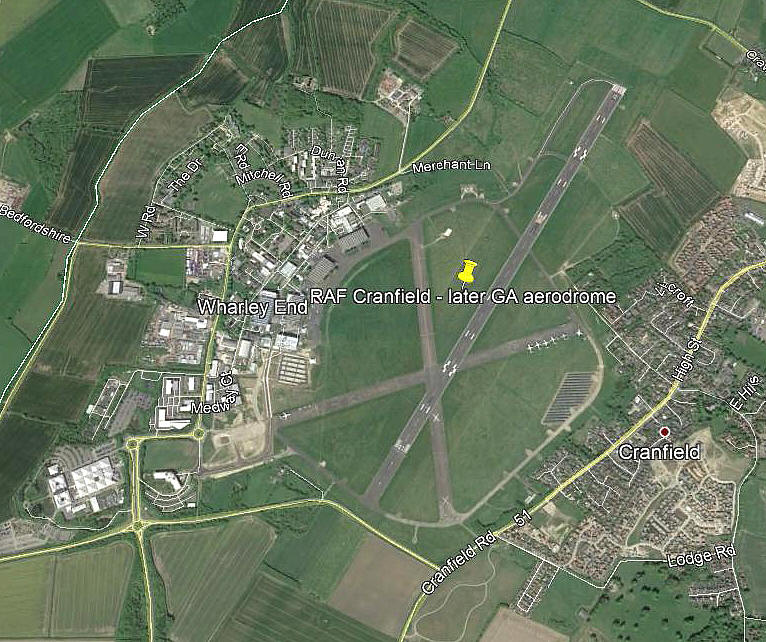Cranfield
CRANFIELD see also ROXHILL MANOR FARM
CRANFIELD: Military aerodrome now a civil aerodrome
Note: All pictures by the author unless specified. In the two PFA Rally aerial pictures by Austin J Brown the Cessna 172 'camera-ship' was being flown by the author.
Military users: Pre 1940: RAF Fighter Command?
Note: This picture from a postcard was kindly sent by Mike Charlton, who has an amazing collection. See, www.aviationpostcard.co.uk
Clearly a major RAF establishment, why aren't any aircraft visible in this picture? Was this picture taken before RAF CRANFIELD became operational?
82(B) & 62(B) Sqdns
108(B) Sqdn (Hawker Hinds)
WW2: RAF Bomber Command and it appears RAF Fighter Command 12 Group plus others?
2 Sqdn (North American P.51 Mustangs)
35 Sqdn (Fairey Battles)
207 Sqdn (Vickers Wellesleys?)
1945 to 1946: Empire Test Pilots School (Bostons/ Harvards/ Lancasters/ Meteors/ Mosquitos/ Oxfords/ Tempests. Plus one of each; Dominie/ Swordfish and Tiger Moth)
Other types operated (but I don’t know in what numbers) were the Firefly/ Halifax/ Lincoln/ Seafire and Vampire)
1948: RN Air Section?
1950: 23 Group Communications Flight (Avro Ansons and Percival Prentices)
This picture from a postcard, was kindly sent by Mike Charlton, who has an amazing collection. See, www.aviationpostcard.co.uk
What is I think worth noting, is that the majority of training types are Cessna 150/152 types. There has never been a better trainer, and, having flown so many, from around Europe to as far as Australia, I will admit to being a fan of the type - great fun to fly - despite most pilots keen to heap derision. Quite frankly I now think that most pilots are not taught to exploit the full potential of this lovely aeroplane.
And indeed, it was many years after doing my basic training on the type for a PPL, before I came across instructors who could show me just what it was really capable of.
Operated by: 1957 to present day: Cranfield University, (previously the Cranfield Institute of Technology?), and The College of Aeronautics, (which opened in October 1946 and today called Cranfield Aerospace and took over the airfield in 1957).
Civil users: Commercial training including ILS approaches by airliners, GA training
1952/3: Smiths Instruments’ Flying Unit (Dakota KJ874/G-AMZE)
Site of PFA Rally from 1980s (1989?) to 2002
Charter/air taxi: Post 1945: Aircruise, Burman Aviation (Charter), Rogers Aviation
Flying schools: Post 1945: Bedfordshire Air Centre, Bedfordshire School of Flying, Billins Air Services, Bonus Aviation, Burman Aviation (Charter), Cabair Flying Schools (also known as Cabair College of Air Training), Cranfield Aero Club (CFS), Cranfield Flight Training, Flyteam Aviation, Patriot Aviation, Taylor Aviation, Walkbury Aviation
Gliding: College of Aeronatics Gliding Club
Note: In the 1957 The Aeroplane directory, the College of Aeronautics Gliding Club are listed. Possibly continuing operations until the 1970s?
Later I found, in 1981, that the Cranfield Institute of Technology Gliding Club were operating here.
Helicopter ops: Patriot Aviation
Maintenance: 1990: Rogers Aviation
Location: 4nm NNW of junction 13 (M.1), 7 nm SW of Bedford
Period of operation: Military: 1937 to 1952? Civil to present day
Runways: 1934: ‘All-over’ grass. Max landing distance 1143
WW2: Between 10th Oct 1939 and 31st March 1940 two hard runways were built these being:
01/19 (later 18/36) 1005x46 and 04/22 1440x46
1945: 04/22 1828x46 hard 01/19 1005x46 hard 08/26 1828x46 hard
1965: 04/22 1768x46 hard 18/36 1067x46 hard 08/26 1828x46 hard
There was also a grass landing area with no defined runways on the NW side of the airfield near the hangars:
N/S 457 grass NE/SW 686 grass E/W 411 grass
1990: 04/22 1807x46 hard 18/36 620x18 hard 08/26 1825x46 hard
Note: A light aircraft landing area was still provided W of runway 18/26 and N of runway 08/26, the area later used for aircraft parking during PFA Rallys.
Note: These two maps were obtained with permission from Pooleys Flight Equipment. Copyright Robert Pooley 2014.
2004: 04/22 1807x46 hard 18/36 620x18 hard
Helicopter runways: 18/36 300x15 grass 04/22 300x15 grass
Temporary grass runway for PFA rallies: 04/22 500x20(?) grass situated roughly central and parallel (on north side) to hard runway 04/22
Area east of hangars defined as ‘Light Landing Area’ grass
NOTES: To give some idea of what this airfield must have looked like during WW2 51 OTU (including the NRCU unit) operated the following types; Ansons/ Beaufighters / Beauforts/ Blenheims/ Havocs/ Hurricanes/ Lysanders/ Magisters/ Masters/ Mosquitos/ Oxfords/ Wellingtons and a Dominie.
14 SFTS operated Harvards, Masters and Oxfords and 2 & 4 Sqdns had Mustangs whereas 181 & 183 Sqdns flew Typhoons. In addition four USAAF Night Fighter Sqdns, (414th, 415th, 416th & 417th ), were trained on Beaufighters. But there’s more! No.3501 Servicing Unit received Beaufighters, Mustangs, Spitfires, Tempests and Typhoons and a Dominie, two Oxfords, a Proctor and a Magister were used by ferry crews of No.2 Delivery Flight
HARD RUNWAYS?
When 14 SFTS moved here from KINLOSS in April 1940 it appears that CRANFIELD was unique, (as a training airfield), in having hard runways. A ‘Q’ decoy ‘airfield’ was constructed at Hardmead roughly 4nm N of CRANFIELD
It was at CRANFIELD it seems that in the winter of 1940/41 an exercise was carried out to compare operations from grass or hard runways. And guess what, the hard runways were found to be vastly superior and as a result a recommendation was made that even training airfields should have hard runways. Were RAF top brass just thick or what? It’s easy to pour scorn today of course but it must be remembered that hard runways were ‘new-fangled’ in those days and in fairness lighter tail-draggers do seem to handle better on grass and all the RAF aircraft were of this type regardless of size! This said it appears that many RAF “top brass” fully appreciated the benefits of having hard runways, and argued for them. Sir Hugh Dowding, surprise, surprise amongst them.
It is said, once again - surprise, surprise - that the tight-fisted Treasury and mostly hopelessly ill-informed politicians couldn’t stump up funds. So here again Great Britain is seen to blunder into a massive war totally ill-equipped and under resourced. Does this strike any chords in the early years of the 21st century? I really do believe we should have huge banners spread across our major ferry ports and airports, saying, “WELCOME TO GREAT BRITAIN – THE BIRTHPLACE OF GOVERNMENT INCOMPETANCE”.
At the outbreak of war in 1939 only eight RAF stations had one or more tarmac or concrete runways! Even in March 1940 those in charge of RAF Training Command were still set against having hard runways on their airfields, and to be fair, considering the generally extremely low standards of airmanship Training Command could produce in most pilots and aircrews - perhaps they had a point? They obviously doubted and stated as much, that they didn’t expect their pilots could fly accurately enough at night, to land on just a 50 yard wide runway. Commercial pilots on the other hand have coped perfectly well for over fifty years flying types as varied as DC-3s to 747 “Jumbo-jets” and Concorde from exactly this width of runway at HEATHROW and virtually all other UK airports.
THE TRICYCLE UNDERCARRIAGE
When World War Two started the day of the tricycle undercarriage had yet to come and it seems the American Air Forces were the first to appreciate the considerable benefits of this design feature. Even they were slow to adopt it though. Incidentally the first example of the tricycle undercarriage I have seen is on drawings of the Aerial Steam Carriage designed and patented by Mr William S Henson in the 1840s. Although this design was hopelessly impractical in detail, in broad conception it has all the hallmarks of some very modern machines like the Beech Starship or Piaggio Avanti
PERPETUAL MOVEMENT
One aspect of WW2 RAF operations that must be appreciated is that most if not all operational squadrons, and even OTUs and FTSs etc, had to be moved around the country to various airfields almost continually. I have yet to discover the reasoning behind this as it seems to make little sense considering the usually very difficult logistics aspects involved. Was this perpetual movement part of a plan to confuse the enemy? If this is the case it can’t have been even moderately successful as a developed airfield is very easy to see from the air no matter how much camouflage is applied. This is something I’ve been very grateful for when embarking on various flights to photograph even the remains of various WW2 airfields.
WHEN THE AMERICANS ARRIVED
When the American night fighter pilots/crews arrived at CRANFIELD they were supposed to be flying the Northrop P-61 Black Widow types. But they weren’t available so they used British Bristol Beaufighter Mk.V1Fs instead, the American crews being accommodated in tented facilities. I’d always assumed the RAF took care of their own maintenance requirements during WW2 but this is far from the case, indeed at CRANFIELD the Bristol Aircraft Company had two blister hangars to help support the Blenheims and Beauforts based here
THE COLLEGE OF AERONAUTICS
Originally the College had, in 1946, two Halifaxs and three Ansons as flying laboratories and three Tiger Moths for student flight training. The Halifaxs soon went, as they were very expensive to operate, and the Ansons were replaced by a single DH.104 Dove. The Tiger Moths were replaced by three Auster J/5F Aiglet Trainers in 1953. In 1954 though a Avro Lancaster PA474 was acquired to investigate laminar flow over wings. This later became the now world famous Lancaster operated by the Battle of Britain Memorial Flight. It was replaced in 1962 with the Lincoln G-APRJ from Napiers at LUTON which was re-registered G-36-3.
GUST RESEARCH UNIT
One intriguing operation from 1947 to 1949 was the British European Airways Gust Research Unit who flew two Mosquito PR Mk.34s (G-AJZE & ZF) all over Europe at high altitudes investigating what I now suppose we’d call wind sheer and/or CAT or clear-air turbulence. They also had ‘air pockets’ in those days when airliners suddenly plummeted several hundred feet - what happened to those I wonder?
ILS AND AUTOLAND
CRANFIELD also played a part in the development of the ILS (Instrument Landing System) programme development in conjunction with THURLEIGH. The ‘Autoland’ programme came next and the Comet XP915 equipped with the huge Pace TR48 computer made frequent visits. The first HUD display was fitted to Comet XV144 and here again CRANFIELD featured.
ROGERS AVIATION
In 1961 Rogers Aviation, (Cessna dealers at that time), took up residence offering charter air taxi operations and a flying school. By the 1980s CRANFIELD was the main UK base for Rogers Aviation.
THE KING’S CUP
On the 9th September 1973 the King’s Cup Air Race was held here for a once only visit in its ninety-one year history (as of 2013) and the winner over the 122.5 mile course was H.W. Bonner flying the DHC.1 Chipmunk 22, G-ARWB.
PFA RALLY PICTURES
Note: In 2016 I started adding PFA Rally pictures to my article on air shows. I trust you will take a look at these.
THE PFA RALLYS
CRANFIELD was used for the Popular Flying Association Rallys from 1989 (?) to 2002. These days many say, and I am inclined to agree, that the PFA Rallys held at CRANFIELD were the zenith of this enterprise and has never been bettered elsewhere. This is certainly true if quantity beats quality as I believe (?) that one Rally at CRANFIELD had the largest ever number of visitors flying in. Indeed, I seem to remember that having between six and seven hundred visitors flying in on a single day was not uncommon.
In order to handle this volume of traffic the Rules Of The Air were temporarily suspended. For example it was allowed for more than one aircraft to land on the main runway and in fact it was allowed for two aircraft to land long whilst two other aircraft could land short. Very brief and concise instructions were given by ATC as to what they expected you to do. I can happily confirm that being in a line with three other aircraft touching down in front is a memory which will be much treasured.
MORE PFA RALLY PICTURES
The first picture was taken by 'Aussie' Brown and is of the author (right) and Guy Browning by the Cessna 172 G-WACL that Austin and the author had flown around many of the major UK airports in 1992. I cannot swear to this, but I do believe the first time I saw a para-glider pilot take off with an engine and propeller strapped to his backside, was at a PFA Rally held here, probably in the later part of the 1990s?
RECOMMENDED READING
This airfield has a significant history in British aviation history and I would thoroughly recommend anybody interested in the history to read Peter Howarths account in the April 2005 ARG Airfield Review as this brief account barely scratches the surface and an almost bewildering amount of different types have visited CRANFIELD over the years aided of course by the PFA Rallies. Also, as Peter Howarth quite rightly concludes, “comparing CRANFIELD to its fellow OTU airfields….none can match the contribution…made to the aeronautical sciences”
CRANFIELD HAS CHANGED
Since the turn of the century, as these pictures show, the activities at CRANFIELD have undergone a major change in direction. If anybody can kindly offer advice, this will be most welcome. I suppose these fairly substantial jets that have appeared are 'executive jets'? Without any doubt the amount of GA activity has greatly diminished.
Note: All four of these pictures were obtained from Google Earth ©
Mark
This comment was written on: 2015-07-30 00:41:47Dear Sir, Can you tell me how much your PPL training is at Cranfield. Kind regards.
Reply from Dick Flute:
Dear Mark, this web-site is just a Guide, you will need to contact the schools separately. Best regards, Dick
Nigel Cox
This comment was written on: 2017-09-24 17:39:37Hi, I left Rogers aviation in 1986 and the PFA rallies had been going for a few years before I left
Reply from Dick Flute:
Hi Nigel, Many thanks, I shall keep this posted. Best regards, Dick
We'd love to hear from you, so please scroll down to leave a comment!
Leave a comment ...
Copyright (c) UK Airfield Guide


















